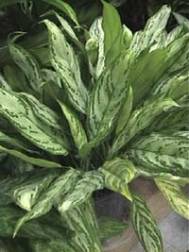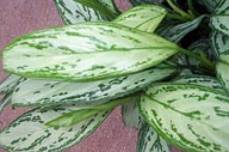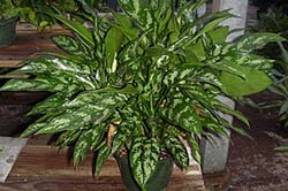Introduction
Flowers, by their very nature, are ephemeral; yet the essences made from them are credited with engendering substantial and often definitive changes in the people who use them.
While flower and vibrational essences from around the world continue to be created and celebrated, and articles can be found which cite the properties of and uses for various flower essences, very little mention is made about any research into their effectiveness as a healing modality.
I believe that, while the data is available, it is only half the story – the best bit, the beautiful bit – is exactly the kind of data that gets ignored or forgotten in the desire to have neatly packaged, standardized data. Without that ‘soft’ data, the beauty of the therapy is lost.
I would like to explore the two components of the equation ‘Beauty’ + ‘Science’ by:
1. Looking at the experience of four of my clients who participated in a ten-week course of treatment with flower essences, as well as two case studies by two practitioners;
2. Examining the research data on the effectiveness of flower essence therapy as a treatment modality.
Beauty
Over a three-month period, I had three consultations with four clients, during which flower essences were given to the clients as part of a flower essence project. While the project was really a pilot study and not a formal study, it revealed some interesting results. Simple quality of life (QOL) questionnaires were created for the clients to assess themselves in four areas: pain, mobility, mood and sleep. The initial questionnaire was filled out before the first consultation took place, while the follow-up questionnaire was filled in after the final consultation had occurred. A final evaluation of the consultations, and what benefit clients felt had been derived from them was also done.
Below (see Table 1) are the clients’ responses to the QOL questionnaires:

It is interesting to note the contrast between perceived feeling and quantifying it on a scale – even such a basic scale as was used for the questionnaires. When questioned about sleep quality, Client 1 stated that she had noticed that her sleep had improved; yet on the scale, there was no change noted. The client felt better but that improvement was not reflected in the more ‘statistical’ answer.
The same occurs when one examines the answers of Clients 2 and 3 – both perceived a positive change in their mood when asked the question, but the objective data, taken on its own, would indicate that no change had occurred.
Interestingly, Client 3 reported an increase in pain levels and a decrease in sleep quality; the client, although reporting an increase in pain (she had on-going problems with ear infections and had a flare up during the course of treatment), when asked if she noticed a change in the level of pain she felt, she noted a change for the better.
Once again, the numbers only tell half the tale. Even more telling were the comments made once the clients were free of the restrictions of numbers, and could express themselves in their own words.
Five questions were given to the clients at the end of the project, asking them:
1. What they liked best about the project;
2. What they liked least about the project;
3. What was the experience of taking the essences like;
4. What changes did they notice in their lives since taking the essences;
5. What changes have others noticed since they have been taking the essences.
The responses were as seen below (See Table 2):

Over the 12 weeks the clients explored their emotions, using the flower essences as their guides, and their inner landscapes bloomed – and it was lovely to see and experience along with them.
All of the wonder of making discoveries about themselves and, more importantly, making changes in themselves, gets lost in the translation of hard data.
The beauty becomes lost.
It is not just my clients who report such experiences of profound changes in their lives – flower essence practitioners from all over the world are reporting similar experiences from their own clients. I’d like to take a look at two case studies, one by a Norwegian GP who uses flower essences as part of his practice, and a Brazilian flower essence practitioner who works in a favela (slum). Although the circumstances reported are radically different on the surface, they both give an insight into the unfolding of the souls of the people taking the essences.
Dr Audun Myskja
Dr Myskja is a Norwegian GP who uses flower essence therapy regularly as part of his practice. His book,
Flower Essences for Growth and Healing, is a recommended text for nurses and social workers at the Regional University in Oslo.
One of his case studies involved Arne, an executive in his 40s, who sought the doctor’s assistance to cope with hair loss, which followed depression over a financial slump at work and subsequent post-viral infection. Dr Myskja prescribed Arne flower essences, taught him relaxation techniques and guided imagery in music. Arne was also taught massage techniques for his scalp and neck and advised to spend 30-60 minutes outdoors daily.
At his next consultation, Arne reported he felt different, as if there was ‘a growing plant within’. He also reported feeling tinges of joy breaking through his lethargy and depression. By his third consultation, Arne reported excitedly that he could ‘feel hair coming up on his bald spots’. Over a six-month period Arne experienced a full recovery, prompted by his growing self-awareness and recognition of the fact that he needed to strike a balance between his inner drive and outer circumstances.[1]
Rosana Souto Sobral Vieira
Rosana Vieira is the founder and co-ordinator of flower essence therapy at Núcleo Mãe Maria (NMM), a social institution run by the religious charity, Os Seareiros. Os Seareiros organizes professional volunteer health practitioners and educators to provide services to some 350 poor families in Campinas, Brazil.
Núcleo Mãe Maria is located in a major drug centre in Campinas, an area marked by violence and poverty. On the other hand, the community is also the home of many hardworking poor, who must leave their children with relatives or on their own while they go out to work.
While Vieira feels that flower essence therapy as a healing modality can be understood scientifically, it must be practised artistically. As a musician, Vieira feels that making up an essence formula is like creating a song, which ‘attunes’ the client’s soul. Therapists, she believes are challenged to create the necessary patterns and timing for each client to ‘hear’ and respond to the song.
One of Vieira’s case studies involved 13 year-old Francisco, who had severe learning difficulties when she began working with him. Francisco came from a violent home, with an abusive alcoholic father and a depressed mother. He suffered from constant nightmares and bedwetting.
The first time Vieira encountered Francisco, it was following a violent fight in which he had tried to prevent his father from beating his mother. He answered questions with ‘don’t know’, was unkempt and appeared emotionally absent. When asked to draw a picture of himself, he grudgingly drew a small figure made of rectangular blocks in the middle of the page.
In one month Francisco showed quite dramatic improvement – he was present, alert and tried responding to questions with complete sentences. His nightmares and bedwetting stopped. Francisco himself was so impressed by the results that he decided to continue treatment. His next picture was that of a fairy with arms open wide – although the heart was covered by a protective badge.
By the third month, Francisco’s mother reported she also noted remarkable changes in Francisco – he was no longer incontinent either at home or school. His teachers reported he was no longer withdrawn – he was even talking too much! While Francisco’s writing had improved, he was still a slow reader.
Over the next month-and-a-half, Francisco remained embodied and alert, although he still had some difficulties with his studies. He began expressing a desire to be connected with nature; his next picture showed him standing in the sun, surrounded by trees, arms wide, the badge covering his heart was gone.
By his fourth consultation, Francisco’s teachers reported that his social behaviour had changed – he was more sensitive and showed emotion when teased or provoked.
Francisco began studying art, which delighted him; meanwhile, his father stopped drinking and his mother began receiving treatment at NMM. Francisco is now an accomplished artist, with regular exhibitions of his work in Campinas. His paintings are all labelled
‘Felicidade’ (‘Happiness’) – the word speaks for itself.[2]
How can a few drops of a dilute infusion of wildflowers catalyze such profound benefits?
By conventional measurement, flower essences are nothing but water with brandy or some other substance as a preservative. However, the above examples show that not only do things happen, but amazing things can happen.
Double-blind studies, as well as clinical research, have demonstrated that flower essences have real, although unquantifiable results on the biochemical level. Traditional scientists would most likely conclude that any evidence presented must be false. It would seem that a new paradigm is needed to understand the evidence – the old Newtonian view of the world as strictly mechanistic does not jibe with the new discoveries in the fields of quantum physics and relativity. In limiting study to only what can be measured and quantified, the life sciences, and particularly medical science, have ignored
quality for
quantity, i.e. behaviour is measured, while experience is ignored.
Flower essences tap into a larger energy field which surrounds each plant and transmits them into the human energy field. To better understand this process, science must develop a new perspective which includes the more ethereal aspects of human beings and nature.
Quantum physics takes a different view of this relationship. Heisenberg’s Principal of Uncertainty proved that complete separation between the observer and observed is an
illusion. The very act of observation affects what is observed; subject and object are inextricably linked. Conventional science still adheres to the paradigm of the detached researcher, who is totally uninvolved with what is being observed.
Flower essence therapy is based on relationships – that of the client with the therapist, as well as the relationship of both client and therapist to the essences themselves. Clients, even very young children, will unerringly pick the pretty pictures that represent exactly the particular issue(s) they are currently faced with – the flowers ‘speak’ to them at some level. The therapist, on the other hand, has a well-developed understanding and intuitive sense of both what the flowers represent and how those properties relate to the issues the client is facing. Without that triangular relationship – therapist to client to essence(s), healing cannot take place.
Science
Is there a scientific way of explaining flower essence therapy? Double blind studies, as well as clinical research, demonstrate that flower essences have an effect, but one that is difficult to measure.
The late Dr Jeffrey R Cram studied flower essence therapy extensively, using conventional scientific methods from which unconventional data was extrapolated, e.g. the double blind placebo controlled method was used to measure stress and environmental sensitivity. Dr Cram documented his results by the use of surface electromyography (sEMG), which measures electrical impulses in the muscles. He also used electroencephalograms (EEGs) to measure the brain’s electrical activity. These tools were used to quantify electrical activity resulting from deeper emotional activity which cannot be captured by conventional means.[3]
One of Dr Cram’s studies, sponsored by the Flower Essence Society (FES), examined the effect of two flower essence formulas on adverse environmental stimulation. A randomized double blind experiment was conducted using Yarrow Special Formula and Five Flower Formula (also known as Bach Rescue Remedy) to assess their effect on intense environmental stimulation from fluorescent lights and its concomitant electromagnetic fields. Results were measured as brainwave activity (EEG) and muscle activity (sEMG) using 19 EEG sites and six sEMG sites.
The study results showed that EEG activation of the frontal lobes area to photic stimulation, but only for those individuals who received the placebo preparation. Concurrent activation of the T6 paraspinals was also noted, again for only the placebo control group. The two flower essence groups showed no similar stress response, indicating that the essences acted as an antidote to environmental stressors.
The overall result suggests that intense light stimulation from banks of fluorescent lights provoked a stress response, indicated by frontal lobe activation, along with extension of the thoracic spine. This flight/fight response was only seen in the placebo group, indicating that the flower essences mitigated the stress response associated with noxious environmental stimulation.[4]
In another FES-sponsored study conducted by Cram, 24 subjects participated in a double blind placebo study, in which the Five Flower Formula was administered prior to taking a Paced Serial Arithmetic Task (PSAT). The impact on the two groups was measured using sEMG electrodes at six sites. While the sEMG sites were used to monitor stress profiling via muscle activity, they also are where the chakras are known to reside, making metaphysical explanations possible. While two of the selected sites (frontal, cervical) reflect traditional monitoring sites, all six sites correspond to chakras. Additionally, peripheral hand temperature and skin conductance (GSR) activity was also measured.
The study results indicated that the flower essence group showed significantly smaller stress responses at the cervical site (throat chakra), as well as at the T6 paraspinal (heart chakra) site. The results also showed that the stress response occurs all along the spine and not just at the usual electrode sites (e.g. wide frontal placement). If this site alone had been used, the true clinical effect of the flower essence would have been missed.
Furthermore, the administration of flower essences just prior to the PSAT significantly reduced the level of reactivity at the C4 Paraspinal/throat chakra, as well as at the T6 Paraspinal/heart chakra site. Why were these two sites more affected, rather than the more commonly used frontal site? Metaphysically, the heart chakra is concerned with love and attachment, while the throat chakra is related to self-control and will. Perhaps the flower essence interacted in some way with these qualities to engender change.[5]
How can ‘nothing’ produce such wonderful results? What kind of science can explain such beauty? It would appear to be well worth the journey for many, if we were to take the time to find out.
References
1. Myskja A. Clinical Report: Three Cases. In Katz R and Kaminski P eds. Calix: The International Journal of Flower Essence Therapy. 1:59-61. 2004.
2. Vieira R. Healing Fear and Finding Love: Flower Therapy for Disadvantaged Children in Campinas. Brazil. In Katz R and Kaminski P eds. Calix. 1:62-73. 2004.
3. Katz R and Kaminski P. Eds. The Living Science of Nature: A Foundation for Flower Essence Therapy. Calix. 1:32-54. 2004.
4. Cram JR PhD. Effects of Two Flower Essences on High Intensity Environmental Stimulation and EMF: A Matter of Head and Chest. Subtle Energies and Energy Medicine Journal. 12(3): 1-11. 2001.
5. Cram JR PhD. Two Double-Blind Scientific Studies of Flower Essences and Stress. Sponsored by the Flower Essence Society. 1-17. 2001.
From : www.positivehealth.com



 Description - Origin
Description - Origin Aglaonema is one of the most ideal indoor plants. It is very resistant to disease and can be grown in conditions that might "kill" many other indoor plants. It can be easily adapted to different conditions and this trait makes it really easy to care for and as a result makes it very popular.
Aglaonema is one of the most ideal indoor plants. It is very resistant to disease and can be grown in conditions that might "kill" many other indoor plants. It can be easily adapted to different conditions and this trait makes it really easy to care for and as a result makes it very popular.  Aglaonemas are not very particular to the soil quality, so any packaged soil is suitable. Make sure though to add some sand into the soil and some pebbles in the bottom of the pot to ensure excellent drainage which is necessary to these plants.
Aglaonemas are not very particular to the soil quality, so any packaged soil is suitable. Make sure though to add some sand into the soil and some pebbles in the bottom of the pot to ensure excellent drainage which is necessary to these plants. 











